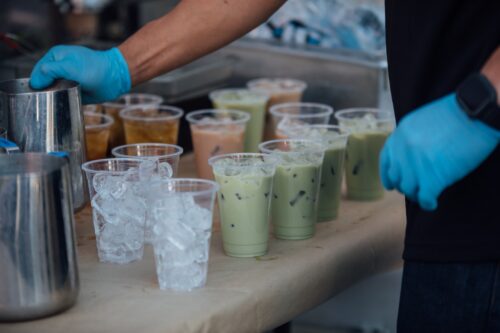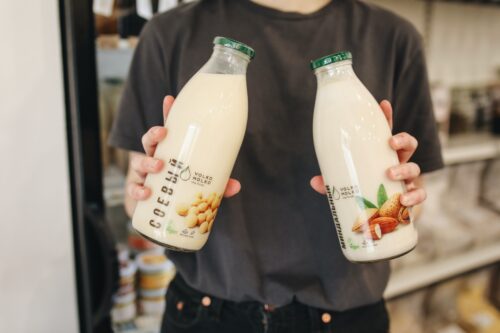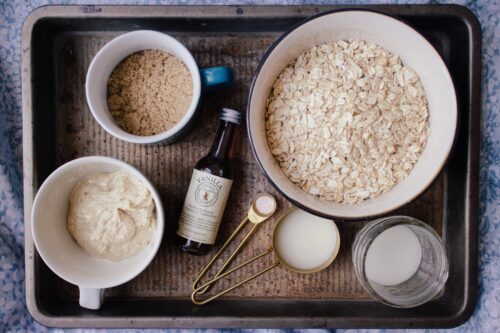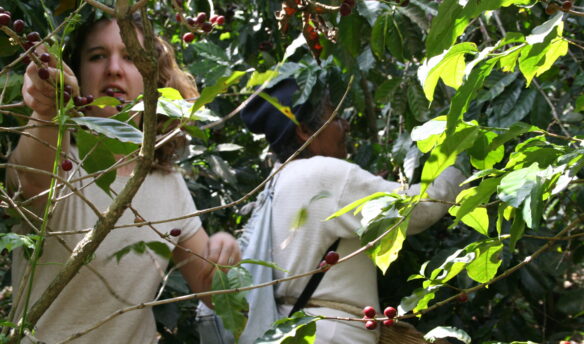In almost every segment of the specialty coffee industry, there has been an increase in choices and options. There are more coffees, more processes, more roasting styles, more types of equipment, and more ways to create fabulous drinks. And there are more and more alternative, plant-based, and non-dairy milks to choose from.
In the past, soy was the only regularly available non-dairy option in most cafés, despite many alternative milks being around for centuries. But now cafés aren’t just expected to offer alternative milks (or three) but to know how to make fantastic drinks from them. Barista-focused plant-based milks make that easier to pull off than ever before.
Let’s look at various alternative milks on the market and general notes on what to expect. This guide is not a comprehensive list of all plant-based milks but gives a profile of some of the non-dairy options more commonly used in cafés.
Soy
Process: dried soybeans soaked, then ground with water to create a milk-like texture; other methods press the soybeans in filtered water to remove insoluble fiber
Tasting notes: beany, slightly malty, light sweetness
Tidbit: tends to curdle with acidic ingredients
Oat
Process: made soaking and blending oats with water, strained to remove the pulp
Tasting notes: sweet and creamy, great base for ice cream
Coconut
Process: made from blending coconut meat and water or diluting coconut cream
Tasting notes: rich and aromatic, light sweetness, creamy
Hazelnut
Process: hazelnuts are gently roasted before grinding and blending with water
Tasting notes: rich hazelnut, smoky, sweetly creamy
Tidbit: popular as a pairing with mochas to mimic a beloved chocolate hazelnut spread
Almond
Process: almonds are soaked, then blended with water
Tasting notes: subtle almond nuttiness, malt, mildly sweet
Cashew
Process: made with a base of filtered water and cashews.
Tasting notes: lightly nutty, toasted grain
Macadamia
Process: made with a base of filtered water and macadamias
Tasting notes: bold nuttiness, malt, sweetly creamy
Rice
Process: made from blending pressed, milled rice with water
Tasting notes: grainy, sweet
Tidbits: one of the most allergy-friendly plant-based milks
What Are Barista-Friendly Blends?
When it comes to coffee and milk, there is a benchmark: dairy. Dairy steams easily and mixes with coffee well, and one of the challenges of early alternative milks is making a blend that can work behind the bar. However, for the most part, many brands make barista-friendly versions of their plant-based milks designed to perform beautifully when steamed.
But let’s take a step back: one of the early challenges for alternative milks is that they tended to separate in the cup, leaving what appears to be a curdled slick on the surface. According to Debra Kaminski at Pacific Natural Foods, customers wouldn’t end up with almond milk or soy milk, but instead “soy chunks in coffee.”
Second, not all alternative milks could steam and stretch like dairy. A barista might end up with a warm, separated mess rather than smooth and homogenous milk. If a barista could pour latte art at all, it usually won’t survive the handoff to the customer.
Alternative milk makers note that these incidents could potentially exclude non-dairy drinkers. “If you’re not a dairy drinker, when you go to a coffeehouse, your experience is often suboptimal,” says Ted Robb of New Barn Organics. In 2013, Pacific released the first barista-specific alternative milk, and now many brands have offshoots of their alternative milk line designed for steaming and pouring.
Creative Cuppings
Coffee cupping is a process used to score coffee and determine quality. When the coffee is hot, cuppers evaluate characteristics such as body, flavor, aftertaste, and balance. As the coffee cools, cuppers assess how well these characteristics work together. As the coffee grows even cooler, attributes like sweetness and uniformity are assessed.
Green buyers rely on this process to identify defects and select coffees in line with their offerings. While the SCA cupping protocol was developed for coffee, many of the principles and techniques used on the cupping table can be applied to plant-based milks. Whether you’re choosing new alternative milk options to bring in to your café, or you want to give your staff a better vocabulary to describe each milk option and how it pairs with your coffee, preparing a milk cupping provides tangential data to inform your non-dairy selections and pairings.
Here are some tips on how to taste and evaluate non-dairy milks:
Cup milk at different temperatures. Just as the characteristics of coffee change as it cools, milk will display different attributes at different temperatures. Taste your milk cold, taste them hot, and taste them as they start to cool. See how different flavors come out and determine your preferences at each temperature.
At the Coffee Fox in Savannah, Georgia, café manager Clay Ehmke says they found the non-dairy milk they used for steaming didn’t taste great cold, so they brought in another variety for their iced drinks. “We keep two varieties each of almond, soy, and coconut,” he says.
Look at how the milk behaves when steamed. Perfecting latte art with cow milk can be challenging enough, but take out the constituents of milk that facilitate steaming (like lactose, casein, and fat), and things can get a lot more challenging. Look at how each milk sample responds to aeration. Does it stretch like cow milk? Does the microfoam hold more than a few minutes?
Slayer recently debuted their newest machine, the Slayer Steam, which promises to deliver better milk flavor and steam control. Marketing manager Sarah Dooley says they tested non-dairy milk with the new machine and found interesting results. “We noticed that you have to steam it a little hotter to get the same results in the development of flavor to standard milk,” Dooley says.
Consider your menu. Choose a few of your favorite plant-based milks and try them with all the drinks on your menu. Try them both in iced and hot beverages, with your most popular house syrups, and with espresso. You may find specific milks pair better with particular drinks, like oat milk in iced drinks and almond milk in flavored lattes, giving you the knowledge to better guide customers through your menu.
Model the café environment. Most customers will drink their beverages slowly. Look at how milks behave over time. “As a drink sits, the bubbles go to the top, and the heavier milk part goes to the bottom—and the drink is no longer homogenized,” says Dooley. This can dramatically affect the flavor and texture of a beverage.
Shop around. Textures, aromas, consistency, and flavors will vary by brand and even within a brand. Look at what’s reasonable for you to source in your café and get a wide range of samples for your cupping.
Try Your Own
Plant-based milks can also easily be made by hand with just a few simple tools. For nut milks, Ehmke recommends using a three-to-one ratio of water to nuts as a base for your milk, then dilute as needed. He uses a Vitamix and nut milk bags to press his mixtures and yield a filtered product, finding success with less commonly found flavors like pepita, cashew, and hemp.
With so many types of alternative milk out there, it’s easy for the options to cramp up the selection process. There’s a simple solution to this: don’t choose just one. A primary reason people choose non-dairy milk is that they can’t handle dairy. Nuts and soy present the same problems for some of your customers, so why would you only choose one alternative milk—which might be a no-go for someone with an allergy? If you prefer almond milk, keeping non-nut alternative milk like hemp or rice under the counter ensures you have options for customers.
If you have multiple espresso options, you likely have one you pair with milk and another you serve straight up. Why wouldn’t you want to match your espresso with a suitable alternative milk? The super fruity natural coffee you have doesn’t fit so well with your go-to cashew milk, but it could be killer with coconut, hemp, or rice.
You have cold coffee, drip coffee, and espresso. Simply having one alternative milk might not cut it for the wide variety on your menu.
Cover photo by Austin Wilcox
This article was originally published on October 4, 2016, and has been condensed for digital publication and edited to meet Fresh Cup’s current editorial standards.














